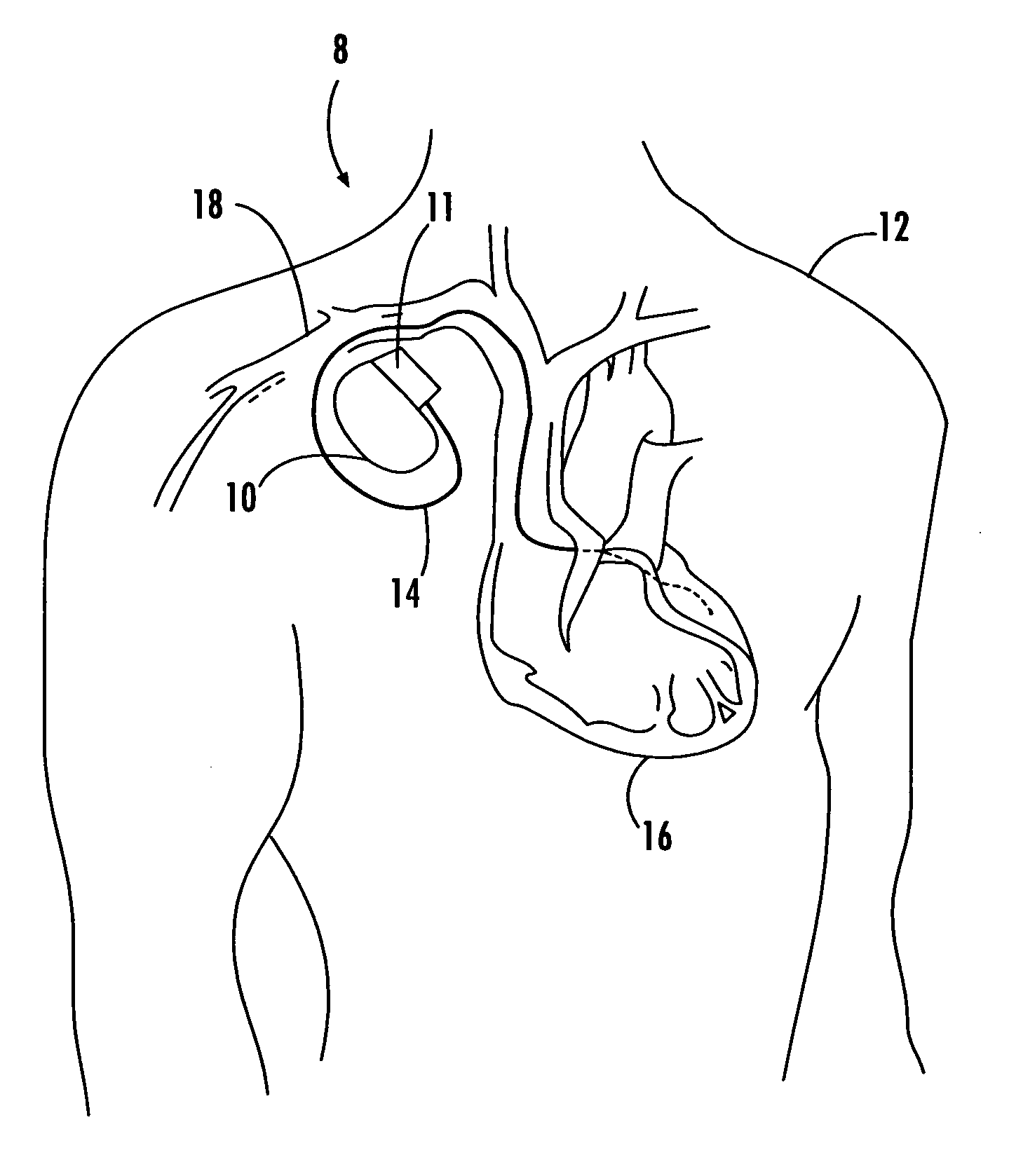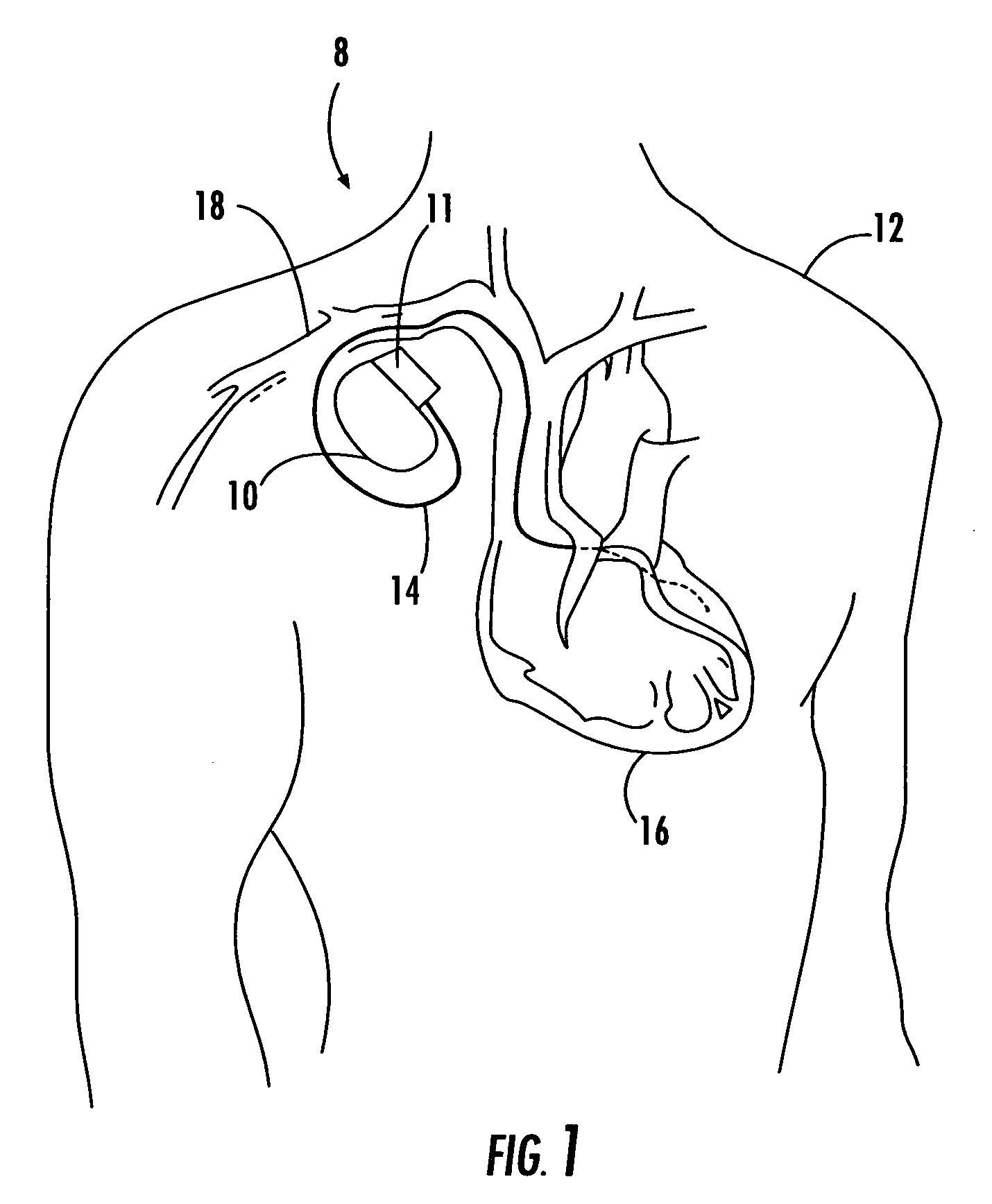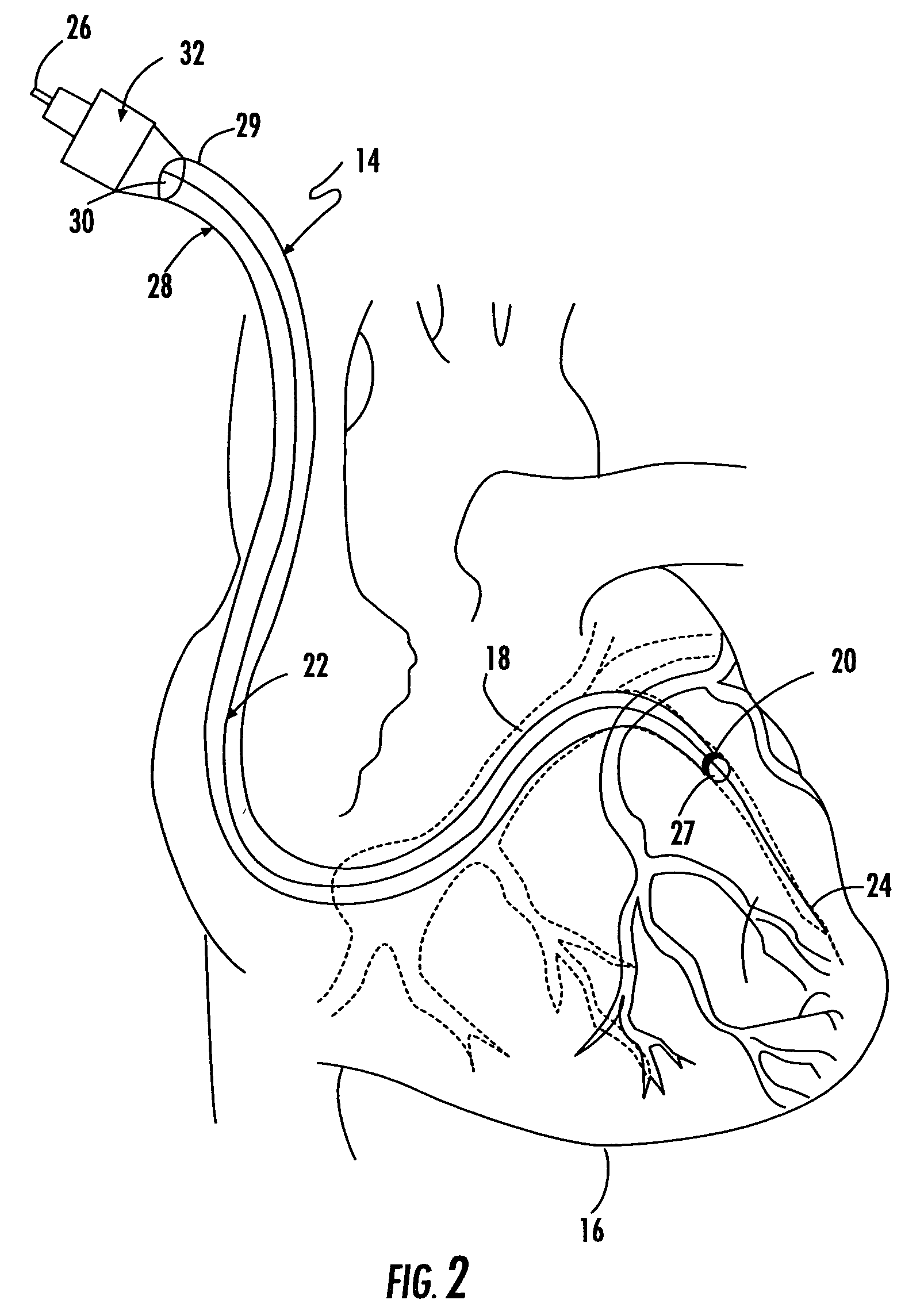Method and apparatus for reliably placing and adjusting a left ventricular pacemaker lead
a left ventricular and lead technology, applied in the direction of internal electrodes, transvenous endocardial electrodes, therapy, etc., can solve the problems of microemboli formation, decreased blood flow, and obstruction of the normal flow of blood in the transvenous cardiac lead, so as to improve the anchoring and positioning of the electrode
- Summary
- Abstract
- Description
- Claims
- Application Information
AI Technical Summary
Benefits of technology
Problems solved by technology
Method used
Image
Examples
Embodiment Construction
[0023] Now referring to the drawings, as was stated above, the present invention provides for a novel left ventricular stimulation lead construction and a technique for lead placement that provides for improved anchoring and positioning of the electrode located on the distal end of the lead, while also including a method for readjusting the positioning of the lead as necessary. It can be appreciated by one skilled in the art of implantable medical devices that, while embodiments of the present invention are described herein in the context of an epicardial implant via a cardiac vein, embodiments of the present invention may be implemented in a host of other therapy delivery contexts.
[0024] The present invention is directed to a lead that is implanted through a cardiac venous system, such as the coronary sinus and its tributaries and is utilized to stimulate, defibrillate, and / or sense the atrium and ventricle of the left side of the heart. As was stated above, in the prior art it ha...
PUM
 Login to View More
Login to View More Abstract
Description
Claims
Application Information
 Login to View More
Login to View More - R&D
- Intellectual Property
- Life Sciences
- Materials
- Tech Scout
- Unparalleled Data Quality
- Higher Quality Content
- 60% Fewer Hallucinations
Browse by: Latest US Patents, China's latest patents, Technical Efficacy Thesaurus, Application Domain, Technology Topic, Popular Technical Reports.
© 2025 PatSnap. All rights reserved.Legal|Privacy policy|Modern Slavery Act Transparency Statement|Sitemap|About US| Contact US: help@patsnap.com



